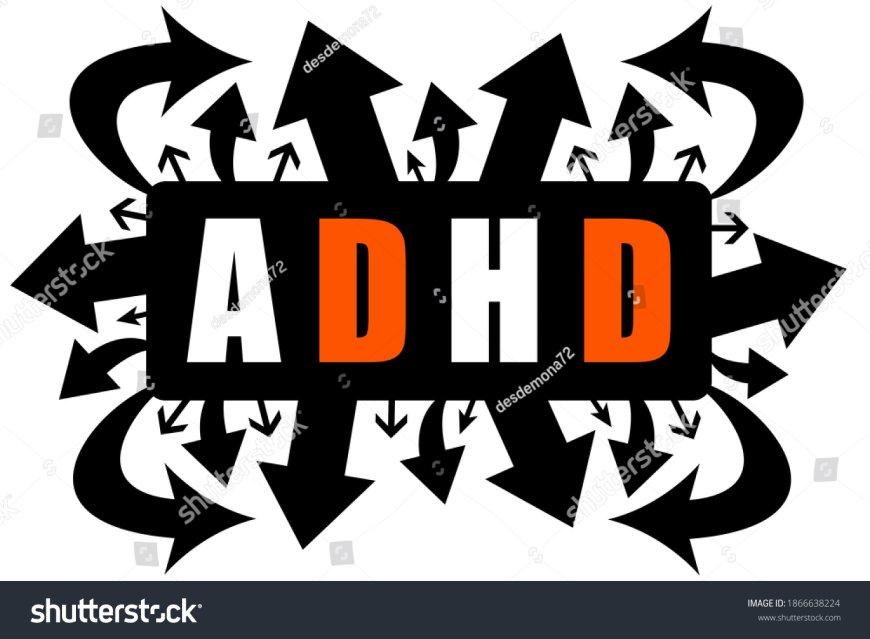From Chaos to Clarity: Organizational Tips for ADHD Minds
Connecting with others who understand your challenges can provide motivation and encouragement. Look for local or online support groups for individuals with ADHD. Sharing experiences can lead to valuable insights and strategies.

Living with Attention Deficit Hyperactivity Disorder (ADHD) can often feel like navigating a whirlwind of distractions and chaotic thoughts. For many, the struggle to maintain organization in daily life can be overwhelming. However, with tailored strategies and practical tips, it is possible to transform chaos into clarity. This article explores effective organizational techniques specifically designed for ADHD minds, providing a roadmap for managing tasks and enhancing productivity.
Understanding ADHD and Its Impact on Organization
symptoms of ADHD affects individuals in various ways, often leading to difficulties with focus, time management, and organization. The brain’s executive functions, which are responsible for planning, prioritizing, and executing tasks, can be impaired. This can result in a cluttered environment and a disorganized approach to responsibilities. Understanding these challenges is the first step toward implementing effective organizational strategies.
Creating a Structured Environment
Declutter Your Space
A cluttered environment can be overwhelming, making it difficult to focus. Start by decluttering your space. Dedicate time to go through your belongings and remove items you no longer need. Consider the following steps:
Set a Timer: Use a timer to break down decluttering into manageable sessions (e.g., 15-20 minutes).
Create categories: Keep, Donate, and Discard.
Organize Remaining Items: Use bins or labeled boxes to keep similar items together.
Designate Specific Areas
Establish specific zones for different activities. For example, create a study corner, a relaxation nook, and a workspace. This physical separation can help your brain associate certain spaces with specific tasks, reducing distractions.
Time Management Techniques
Utilize Visual Timers
Visual timers are excellent tools for those with ADHD. They provide a visual representation of time passing, helping to maintain focus on tasks. Consider using:
Digital timers with countdown features.
Sand timers for a tactile approach.
Break Tasks into Smaller Steps
Large tasks can be intimidating. Breaking them down into smaller, more manageable steps can reduce anxiety and enhance focus. Use the following techniques:
Write down tasks in order of priority.
Create checklists for each step of a project. Checking off items can provide a sense of accomplishment.
Implement the Pomodoro Technique
The Pomodoro Technique involves working in short bursts with breaks in between. For example, work for 25 minutes, then take a 5-minute break. This can help maintain focus and prevent burnout. Use a timer to keep track of these intervals.
Tools and Apps for Organization
Digital Tools
Many apps can aid in organization for ADHD minds. Here are a few to consider:
A task management app that allows you to create lists, set deadlines, and prioritize tasks.
A visual project management tool that uses boards and cards to help organize tasks.
A note-taking app that helps keep thoughts, ideas, and tasks in one place.
Physical Tools
In addition to digital tools, consider physical organizational tools:
A customizable journal for tracking tasks, habits, and goals.
Use them for reminders and quick notes. Color coding can also add visual interest and aid memory.
Great for visual learners, whiteboards can be used to jot down tasks, ideas, and reminders.
Establishing Routines
Create Daily and Weekly Routines
Establishing consistent routines can greatly enhance organization. Consider the following tips:
Start your day with a structured morning routine to set a positive tone.
Dedicate time each evening to prepare for the next day. Review your to-do list and set goals.
Use Rituals for Transitions
Rituals can help mark the transition between tasks. For example, you might take a few deep breaths or stretch before moving from work to relaxation. This can signal to your brain that it’s time to switch gears.
Setting Realistic Goals
Focus on Progress, Not Perfection
ADHD can lead to a harsh inner critic. Shift your mindset to focus on progress rather than perfection. Celebrate small victories, and recognize that organization is an ongoing journey.
Use SMART Goals
Setting SMART (Specific, Measurable, Achievable, Relevant, Time-bound) goals can provide clarity and direction. For example, instead of saying, “I want to get organized,” specify, “I will organize my workspace by decluttering it for 30 minutes every Friday.”
Seeking Support
Consider Professional Help
Sometimes, professional assistance can provide valuable guidance. Consider working with:
They specialize in helping individuals with ADHD effects develop organizational skills.
They can address underlying issues and provide coping strategies.
Join Support Groups
Connecting with others who understand your challenges can provide motivation and encouragement. Look for local or online support groups for individuals with ADHD. Sharing experiences can lead to valuable insights and strategies.
Conclusion
Transforming chaos into clarity is an achievable goal for individuals with ADHD. By understanding the unique challenges posed by the condition, implementing structured environments, utilizing time management techniques, and establishing supportive routines, anyone can enhance their organizational skills. Remember, the journey towards organization is personal and requires patience. Embrace small changes, seek support when needed, and celebrate your progress along the way. With the right strategies in place, clarity is within reach.
What's Your Reaction?


























